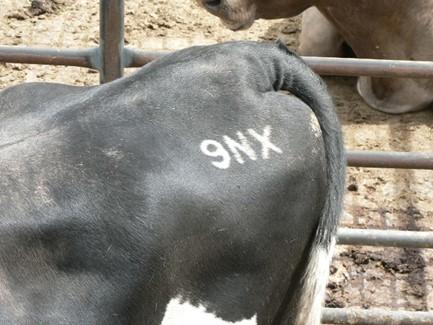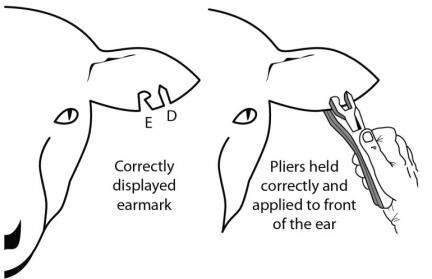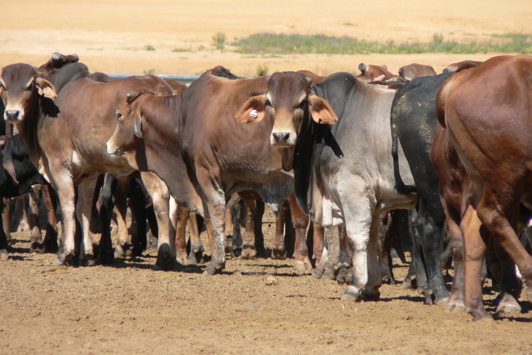The identification and movement of cattle and buffalo in WA must follow the requirements set out in the Biosecurity and Agriculture Management (Identification and Movement of Stock and Apiaries) Regulations 2013.
The regulations also require the registration of all livestock owners and non-farming property operators in WA.
These important requirements assist in maintaining Australia's livestock traceability and biosecurity systems, assuring our trading partners of our ability to trace disease and residue issues effectively. They also deter theft and assist in recovering stolen animals.
Where cattle are mentioned below, buffalo are inferred unless specified otherwise.
Identification requirements
Cattle and buffalo must be identified with an approved electronic National Livestock Identification System (NLIS) device. They may also be identified with the owner's registered brand and/or earmark, or where applicable, an approved identifier.
Branding and earmarking are optional, but if you wish to apply these identifiers in addition to applying an NLIS device, they must be applied in the approved manner — in the correct location and orientation. Further information is outlined below.
All cattle and buffalo are required to be fitted with an approved electronic NLIS device.
NLIS identification can be either an accredited electronic device fitted to the ear (tag), or a rumen bolus, which is inserted into the reticulum. The bolus comes with an ear tag to indicate its presence.
- An NLIS ear device or rumen bolus tag is always fitted to the animal’s right ear.
- A white (breeder) device should be fitted to cattle on their property of birth.
- An orange (post-breeder) device should be fitted to cattle as a replacement for a lost/non-functioning device if the animal is not on its property of birth.
Only one functioning approved device is to be applied, as lifetime history and movement details are maintained on the NLIS database as ownership/location of the livestock changes.
- Within the South West Land Division
Cattle within the South West Land Division must be fitted with an NLIS electronic device by six months of age, or before being moved from the property, whichever occurs first.
- Outside the South West Land Division
Cattle outside the South West Land Division must be fitted with an NLIS electronic device by 18 months of age, or before being moved from the property, whichever occurs first.

Registered stock brand
If you choose to brand your cattle, the brand must be applied on the left rump or shoulder, as either a freeze or firebrand. Animals should only be branded by an experienced operator.
It must measure at least 150 mm long and be 50 mm high.
Your registered brand consists of 2 letters and a number. One of the letters may be ‘lazy’, that is, lying on its side to the left.
Firebrands can be applied to the horns of buffalo, but not cattle.

Registered earmark
Earmarking of livestock in WA is optional. Your earmark is a combination of 2 specified shape notches taken out of the ear in the allocated location.
When the registered earmark is used, it must be applied to the ear nominated on your property identification card (PIC) and in the correct locations on the ear as illustrated on your registration certificate. The appearance will alter if it is applied to the ear from a different position, for example, from behind the ear instead of from the front. This will not be your legal earmark and may belong to someone else.
Male and female cattle you breed will be earmarked in the same ear – both left or both right, as specified on your brand certificate and PIC card.
Earmarks must be at least 12 mm in height at the maximum point, applied using approved earmarking pliers, which are available from rural suppliers or online direct from the manufacturer.
Bringing cattle and buffalo onto your property
Earmarked cattle cannot have another earmark applied, however, if owners wish to re-brand newly acquired stock, their registered brand must be applied immediately below the existing brand.
If purchased or introduced stock are not branded or earmarked, the owner may choose to identify them with their allocated brand or earmark.
Cattle must only have one NLIS device applied to them. However, if bought-in cattle do not have a NLIS device or it is not functioning, a device of the appropriate colour should be fitted as soon as practical:
- white if on the property of birth
- orange if not on the property of birth, or
- orange if any doubt about it being on the property of birth.
It's illegal to remove or replace NLIS devices unless they are not functioning. Make sure the scanner is fully charged and operational before replacing devices that do not scan.
Identification equipment
Electronic NLIS devices and registered identification equipment can be purchased through rural suppliers or online directly from the manufacturers. You will need to ensure you have an active approved livestock registration (and Property Identification Code).
Note the following:
- NLIS devices registered to a specific PIC can only be applied to animals while on the property registered to that PIC, unless a permit has been issued by a department-authorised inspector.
- NLIS devices cannot be taken to a saleyard or similar facilities to be applied to cattle unless a permit has been issued by a department-authorised inspector.
- NLIS devices cannot be sold privately; contact the WA Cattle NLIS Helpdesk if you have surplus devices that you are unsure what to do with.
- Equipment for applying the registered brand or earmark must not be removed from the property(ies) with the PIC they are registered to, without a permit issued by the department.
Requirements for moving cattle or buffalo
Cattle or buffalo must not be moved off a property without an NLIS electronic device and a completed National Vendor Declaration, waybill or equivalent.
The movement to a different PIC must be updated on the NLIS database within 48 hours of arrival at that PIC. These requirements ensure that animals can be traced in the event of disease outbreak or chemical residue incident.
Cattle or buffalo must not be moved off a property without an NLIS electronic device and a completed National Vendor Declaration, waybill or equivalent.
Complete a declaration every time you move stock from a PIC.
These requirements ensure that animals can be traced in the event of disease outbreak or chemical residue incident.They also prove that stock is being moved with the owner’s consent and it must remain with the stock while they are being transported. The documents must be kept for 7 years.
To register with the Livestock Production Assurance (LPA) program and become accredited to access the commercially preferred waybills, contact 1800 683 111 or online at the Meat & Livestock Australia website.
Alternatively, the department provides plain waybills, find out more at Livestock movement and waybills.
If you're regularly moving stock between properties with the same PIC, the PIC card, or a full copy of it, can replace the need to fill out a waybill each time.
Properties involved must be listed on the card and stock being moved need to be identified to that PIC/brand. It also allows movement of branding and earmarking equipment between the properties.
Cattle arriving on a PIC must have their NLIS device scanned and transferred to the new PIC on the NLIS database within 48 hours of arrival. This is the responsibility of the receiver of the stock. They do not have to physically do it themselves but they must ensure it's done.
To access the NLIS database you first need to create an account. Once you're registered you can login to the NLIS database to transfer stock. For more information refer to the NLIS website and user guides.
If cattle are bought from a saleyard or public auction, such as a trade show, on-farm bull sale or clearing sale, the saleyard operators will usually transfer the stock to the buyer’s PIC. This is the one instance where the receiver does not have to do the transfer, but they should check and confirm that it has been done.
If you're an owner of livestock, you have a responsibility to ensure that you meet requirements of the Biosecurity and Agriculture Management (Identification and Movement of Stock and Apiaries) Regulations 2013.
The penalty for a breach of this legislation may be a fine up to $20 000.
Offences under the regulations:
- Possessing stock that are not legally identified.
- Using another person’s NLIS electronic device/s.
- Removing NLIS identification.
- Trading or moving animals without correct NLIS identification.
- Failure to transfer animals on the NLIS database after movement to a different PIC.
- Applying your earmark, brand or NLIS devices to animals on another person’s property.
- Using another person’s registered brand or earmark.
- Possessing another person's registered branding or earmarking equipment.

